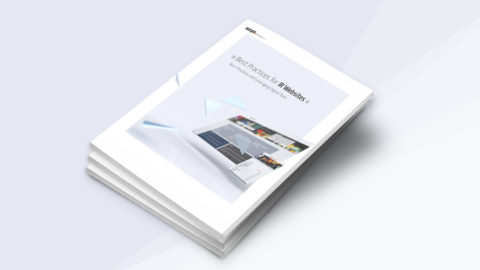How to Write Engaging Workplace Policies
7 tips for drafting coherent workplace policies that employees will follow.

Companies are in favour of workplace policies to help minimise risk. A code of conduct is usually laid out as a guideline for how employees should act in their workplaces. It is not only an internal guideline for employees, but also serves as a declaration of the company’s corporate values and working principles.
But far too often these policies are littered with legal terms, regulations and restrictions. Policies like these which fail to motivate and engage employees miss the point and are not effective.
In this article, we address the question of how to create policy content that is understandable, consistent, and legally compliant.
What are rules of conduct?
Every organisation must have a set of rules that their current and prospective employees agree to abide by in their daily work environment and guide employee behaviour. These are generally defined as the organisation’s code of conduct, which describe its missions and values while clearly setting a benchmark for employee behaviour. The resulting rights and obligations, which are communicated as instructions and prohibitions, provide a binding framework for the employees of an organisation.
While the rules of conduct play a key role in aiding employees make day-to-day decisions in line with the values of the organisation, they also serve the purpose of communicating their corporate values to externals.
For the policies to be effective, it is essential to put in deliberate effort into not just compiling them in the form of a document, but also in phrasing the rules. Good policy writing is reflected in the way the content is defined, structured, and communicated to the employees. For instance, the rules can be presented in multiple ways by categorising them into content classes, where in the ‘core’ has rules in the form of questions and answers, while technical notes and process instructions make up the procedural level and can be later assisted with a glossary (explanation level) along with scenarios that serve as illustrative examples.
Here are our tips for drafting coherent and engaging policies that will have a positive impact on life in the workplace:
1. Explain the Purpose
Create trust between you and your employees by ensuring everyone understands the policy’s purpose. Why is the policy necessary? Explain unambiguously what value it brings to your company. Once the purpose is clearly defined, ensure that the policy content is well structured. Roughly, it could be divided into thematic, procedural and role-oriented content.
2. Avoid Jargon
Make sure you use precise wording that every employee will understand. Avoid legal or technical jargon. Use short, simple sentences to ensure the meaning is clearly communicated. Often, communicating policies clearly to the employees is difficult since they mainly contain complex legal language. To convey the policies effectively, it is important to communicate the policies from the employees’ point of view. Accessibility of policies is a major concern that should be taken into account while drafting them.
3. Use Real-Life Examples
Explain what acceptable and unacceptable behaviour in the workplace looks like by using real-life examples. These examples should be tailored to your company’s day-to-day work and address real risks.
4. Define the Policy’s Scope
Identify which employees must comply and which are excluded. If persons or groups are excluded, ensure these are precisely defined to avoid any misunderstanding in the future. Ensure that only relevant employees are being asked to read policies.
5. Define and Communicate Consequences of Infringements
A workplace policy is only effective if it clearly defines the consequences for employees if they fail to comply. Make clear how employees should act if they see internal violations occurring.
6. Focus on Regulatory Cores
Regulatory cores are concrete instructions for action and omission and describe whether actions are permissible (rights) or whether they are mandatory (obligations). Regulatory cores can be divided into 4 categories mainly: Authorisation, command, exemption, and rights.
7. Avoid Restrictions
Negative formulations and harsh restrictions should be avoided. Formulate your policies as positive expectations, therefore showing employees that you have confidence in them. Ideally, policies should be conveyed not from the perspective of prohibiting the employees from doing an action but should focus on pointing out possibilities, i.e. stating what you can do as opposed to what you cannot do.
A permission is a right to act and express under certain conditions.
For instance, while writing travel-related policies addressing the question: ‘Can I travel by train?’ a permission-oriented policy formulation would look like this: ‘The use of the railway for business trips is permitted if…’
Contrary to this, a prohibition-oriented policy would look this like this: ‘The use of the railway for business trips is not permitted if…’
Conclusion
Follow these seven tips for writing your workplace policies to ensure your employees are engaged and will adhere to the policies.
In addition, we would recommend implementing a well-structured policy life cycle as even the best policies are only effective if they are reviewed periodically. The easiest way to manage this is by using a digital policy management system and a virtual Rulebook to communicate company rules.

How to effectively create, implement and communicate compliance policies and measure the success of your policy program – for everyone who is responsible for Compliance policies in their organization





